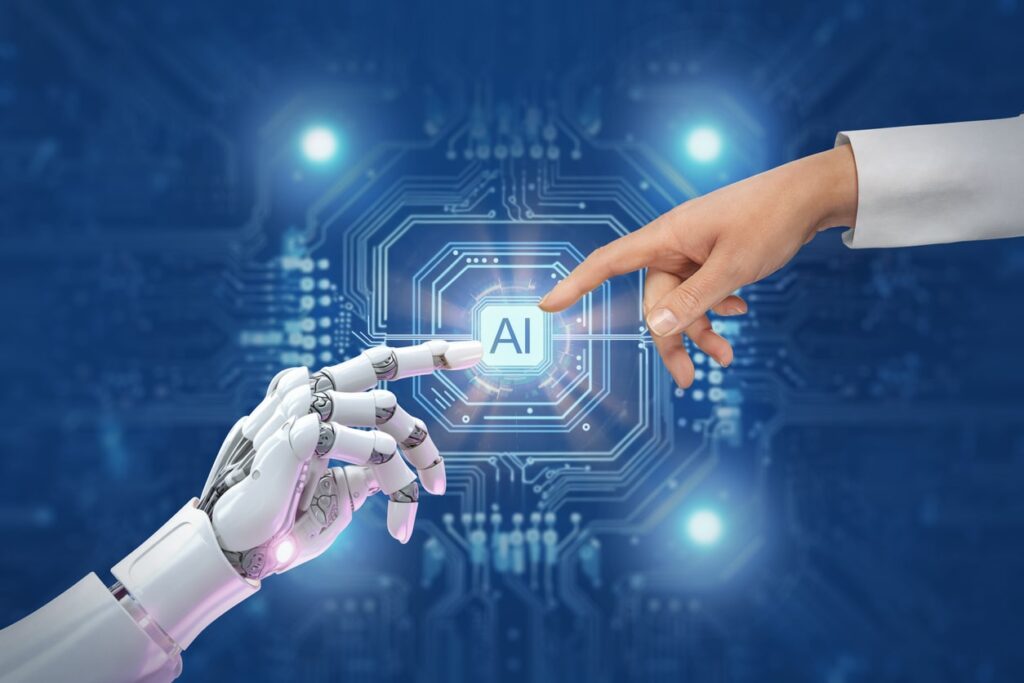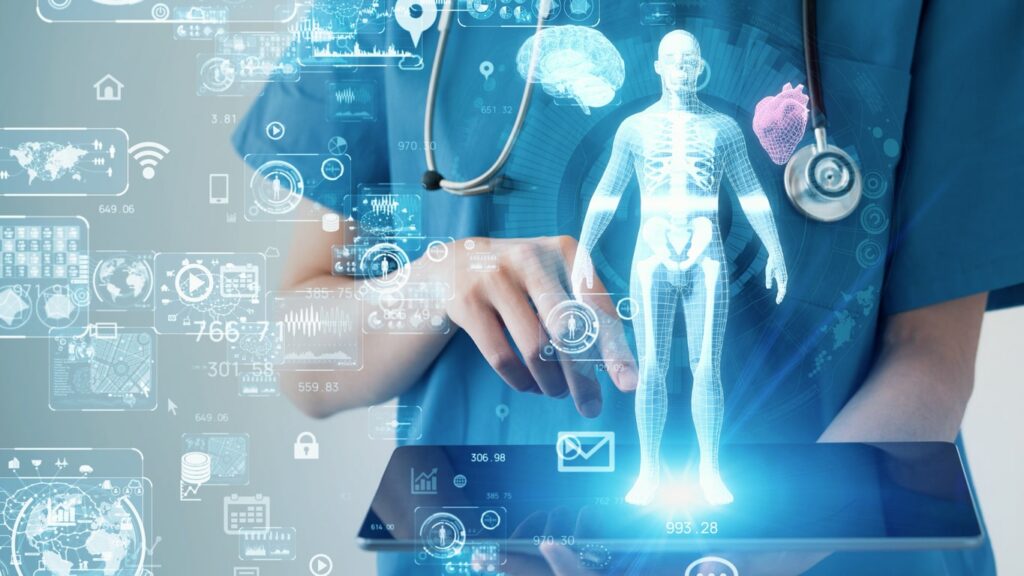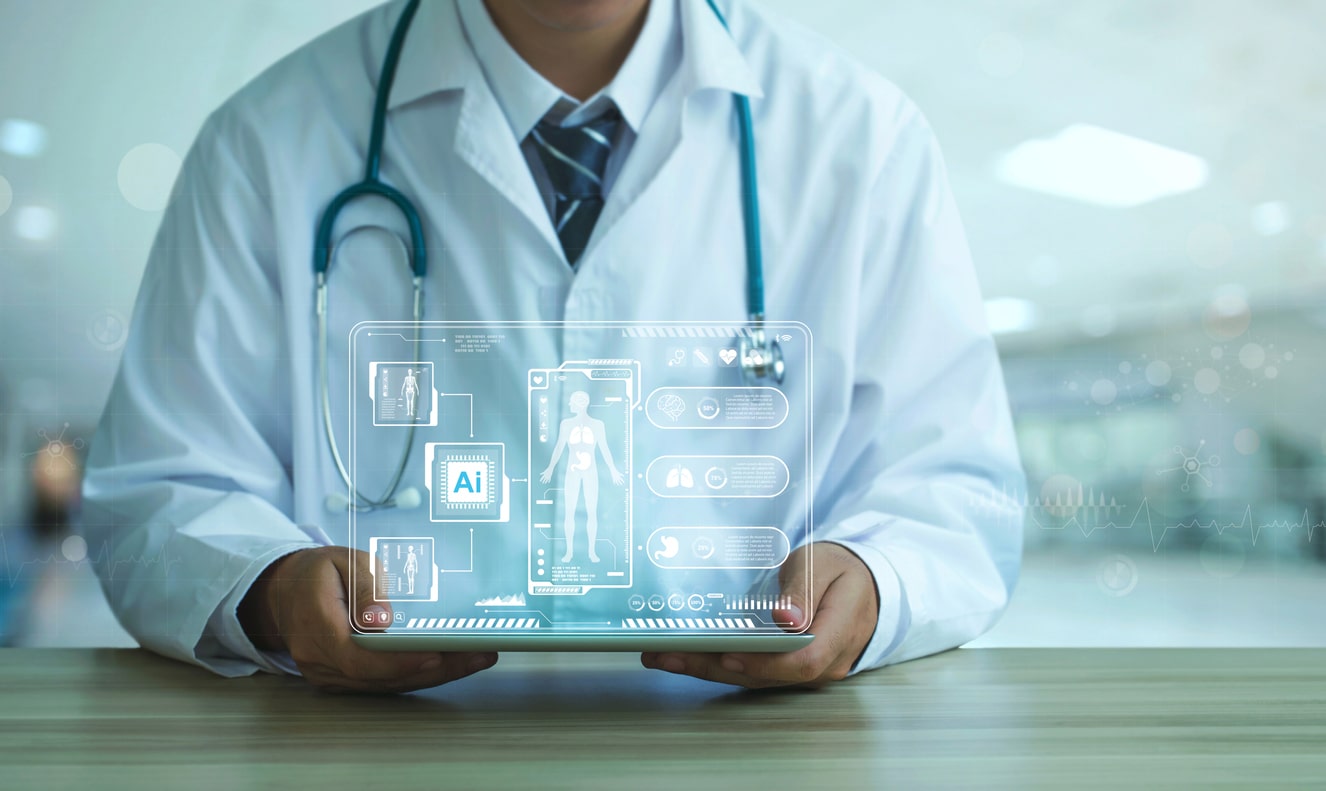Technology in healthcare has always been rapidly evolving, but ever since the Covid-19 pandemic, technological advancements have accelerated to unprecedented proportions. We highlighted these top healthcare technology trends at the back end of 2022 in our article. In 2023, artificial intelligence (AI) has been one of the most talked about technological innovations, with the likes of ChatGPT and Bard taking over the world of chatbot assistants, and AI equipment streamlining processes in multiple industries.
But how is it impacting healthcare? According to Binariks.com, the global artificial intelligence in healthcare market was valued at $16.3 billion, and is expected to grow to $173.55 billion by 2029. That’s a compound annual growth rate of a huge 40.2%, showing that the healthcare AI market will experience a significant growth trajectory over the next few years. With that in mind, this article explores some of the biggest AI trends influencing healthcare in 2023, and looks forward to seeing what could be big in the future.
Top AI Trends in Healthcare of 2023

Precision Medicine
The application of AI in precision medicine is growing quickly and is a more modern approach to understanding health. Traditionally, every person who has a certain condition, illness or disease would be treated in the same way, but not everybody is the same, or reacts in the same way to certain treatments. In the past, the facilities weren’t readily available to treat each person differently, and it was much more effective to use a blanket approach. However, with AI equipment this becomes a lot easier.
AI can create highly customised treatment plans by examining a wide range of patient data, including genetic, environmental, and lifestyle variables. This method is especially important for treating complicated illnesses like cancer, where AI can be used to determine the best drug combinations and treatment plans based on the genetic characteristics of each patient. AI-driven precision medicine is also attempting to forecast how patients will react to different treatments, which will help physicians select the best courses of action and minimise trial-and-error.
In 2023, the use of multigenic tests such as Oncotype Dx® serves as an example of precision medicine in the treatment of breast cancer, specifically for oestrogen-positive/HER2-negative (ER+/HER2-) early breast cancer. These tests play a crucial role in selecting adjuvant therapy by analysing a panel of genes from tumour samples to inform treatment decisions.
Predictive Analytics
AI-driven predictive analytics in healthcare is transforming patient care by forecasting future health events and trends. This technology analyses historical and real-time data to predict patient outcomes, identify patients at high risk for certain conditions, and anticipate healthcare needs. AI algorithms, for instance, can identify patients at risk of developing chronic diseases like diabetes or heart disease by analysing lab results, imaging data, and electronic health records (EHRs). Predictive analytics can also be very helpful in forecasting patient admission rates, managing healthcare resources, and staffing and inventory optimisation in hospitals. This technology relies on sensors, IoT, and smart technology to monitor and manage equipment performance.
AI-driven predictive analytics is being used more and more in conjunction with wearable technology, such as fitness trackers and smartwatches, to monitor and manage health conditions. Numerous health data, including heart rate, activity level, sleep patterns, and even blood oxygen levels, are continuously collected by these devices. This data can offer important insights into a user’s health status and possible health risks when combined with predictive analytics.
Medical Imaging and Diagnostics
AI has a significant impact on diagnostics and imaging in medicine. In radiology, pathology, and ophthalmology, advanced algorithms are improving image analysis’s speed, accuracy, and efficiency. AI can frequently identify abnormalities in MRIs, CT scans, and X-rays more quickly and accurately than human specialists. This ability is critical for early disease diagnosis and detection, especially for diseases of the retina, lung nodules, and breast cancer. Furthermore, real-time analysis of medical data using AI is becoming more common, helping physicians make better decisions during operations and treatments.
A combined study by King’s College London, the University of Warwick, Wellcome and multiple NHS sites has demonstrated that AI can analyse X-rays and determine medical issues just as quickly, if not quicker than doctors. The software, titled X-Raydar, can scan x-rays as soon as they are carried out and can flag any abnormalities almost instantly, and subsequently gives a percentage of each abnormality being present.
Comprehensive AI programmes like this will be the future of medicine, with AI acting as a co-pilot for busy doctors. With the acute shortage of radiologists in the UK, programmes like this will facilitate interpretation and reduce delays for diagnosis and treatment.
Professor Vicky Goh, Co-author of King’s College London, and immediate past Chair of the Academic Committee at the Royal Society of Radiologists

Drug Discovery and Development
Pre-clinical phases of traditional drug discovery ordinarily take three to six years and cost hundreds of millions to billions of dollars. It is a notoriously time-consuming and costly process. However, a plethora of AI tools are transforming almost every phase of the drug discovery process, with significant potential to change the pace and economics of the sector.
AI is far faster than conventional methods at identifying possible drug candidates by analysing large datasets. This involves making assumptions about how novel medications might interact with the body, spotting possible negative effects, and even helping to plan clinical trials. The development of novel therapeutic targets and pathways, particularly for diseases for which there are currently no effective treatments, is being made possible by AI’s ability to analyse complex biological data. This is opening up new therapeutic avenues for drug development.
Robot-assisted Surgery
We have already explored how humans and robots can work collaboratively, and this is true for the healthcare industry, too. The use of AI in robot-assisted surgery is becoming more prevalent, offering unprecedented precision and control. These robotic systems, powered by AI algorithms, assist surgeons in performing complex and delicate procedures. Thanks to technology, surgeries can now be performed with minimally invasive methods, which shortens recovery times and lowers the chance of complications. AI improves the skills of the surgeon by offering real-time data analysis, precise motions, and even predictive insights during the procedure. This trend is not only increasing the potential for surgical treatments, but also improving surgical outcomes, even in areas where human precision may be limited.
A real-world example of robot-assisted surgery is the Smart Tissue Autonomous Robot (STAR). This system is used in laparoscopic operations to create and execute a surgical plan with minimal human intervention. In fact, in 2022 it became the first robot to carry out a soft tissue operation without human help, when it performed a laparoscopic operation on a pig. STAR uses machine learning-based tracking algorithms, 3D imaging systems, computer vision and advanced control techniques to act if an issue arises during surgery. This is a significant step towards automated operations on humans in the future.
Virtual Health Assistants (VHAs)
These AI-powered systems, which frequently take the form of chatbots or virtual agents, offer round-the-clock support, improving the efficiency and accessibility of healthcare. In addition to helping with symptom triage and answering patient questions, VHAs also provide appointment scheduling and medication reminders. They are particularly helpful in handling routine inquiries, which lessens the workload for medical staff and frees them up to concentrate on more difficult patient care duties.
VHAs can provide individualised interactions by accurately understanding and responding to patient needs through the use of machine learning and natural language processing. This pattern is a reflection of a larger movement in healthcare towards digital solutions, where technology improves patient experience and expedites the provision of care, making it more patient-centred and responsive.
What Does the Future Look Like?

As we look towards the future of AI in healthcare, it’s evident that the convergence of technology and medicine is poised to fundamentally transform the industry. In 2024 and beyond, the trends we are observing today are likely to evolve, bringing even more sophisticated and impactful applications of AI in healthcare.
Newer technologies, such as virtual hospital wards, may become more popular in 2024, as they allow patients to receive remote care at home rather than being in hospital, lightening the workload of medical staff and freeing up beds for the people who need them most. These wards work by using interconnected IoT devices to monitor patients and provide communication channels for healthcare professionals remotely. This type of care is referred to as ‘telemedicine 2.0’, as it goes further than the simple delivery of remote care. Virtual wards act as a centralised hub where medical professionals can monitor a group of people remotely.
Technologies like augmented reality (AR) and virtual reality (VR) are also becoming more popular in healthcare. Just this year, it was reported how healthcare professionals use VR to manage long-term chronic pain issues. It’s also being used in other industries to enhance safety. AR is being used for instances like wound management, facilitating the non-invasive evaluation of a patient’s wound’s severity, state of healing, and optimal course of treatment.
Conclusion
The future of AI in healthcare is incredibly promising, marked by advancements that not only improve patient outcomes and operational efficiency but also pave the way for new therapeutic possibilities and a more personalised approach to patient care. Precision medicine will continue to advance, the integration of AI in medical imaging and diagnostics is expected to reach new heights and robot-assisted surgery, already on the rise, will likely see increased adoption. Without a doubt, as these technologies advance, the healthcare industry will change, becoming more proactive, accurate, and patient-centred.
Disclaimer
All content and information in this article is for informational and educational purposes only and does not constitute medical advice.











